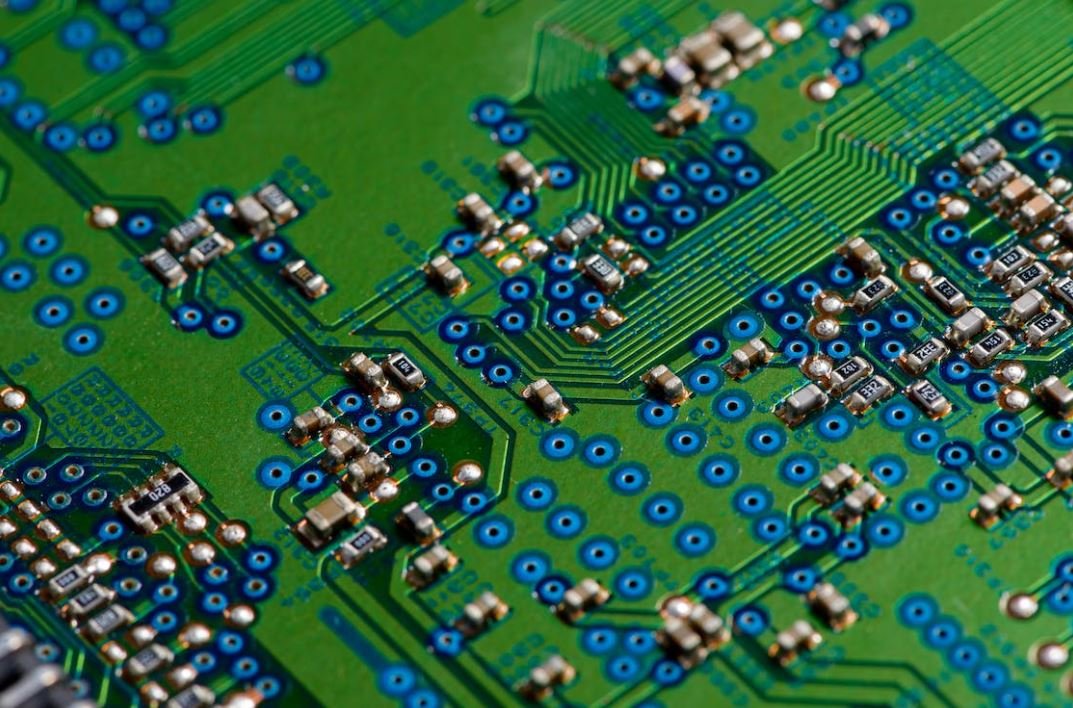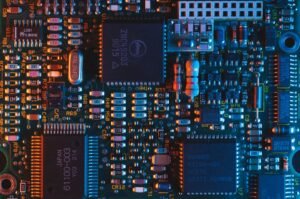Why Singers Wear Earpieces
Singers are often seen wearing earpieces during performances or recordings, and while it may seem like a fashion statement, there is a practical reason behind it. These earpieces, also known as in-ear monitors (IEMs), serve several important purposes for singers, ensuring they can deliver their best performance while protecting their hearing.
Key Takeaways:
- In-ear monitors or earpieces are worn by singers to enhance their performance.
- These devices provide clear and accurate sound directly to the singer’s ears.
- Singers can protect their hearing by using earpieces to control the volume of their monitor mix.
- Custom-molded earpieces offer a secure fit and improved sound isolation.
*Using in-ear monitors allows singers to hear themselves and their band or accompaniment clearly and at a controlled volume, irrespective of the venue’s acoustics or the crowd’s noise level.*
**One of the main purposes of a singer’s earpiece is to provide clear and accurate sound directly into their ears**. Traditional on-stage monitors can sometimes be too loud or have poor sound quality, making it difficult for singers to hear themselves and stay on pitch. In-ear monitors, on the other hand, can deliver a high-quality and consistent audio feed, allowing singers to hear their own vocals and the accompanying music with clarity.
Singers often perform in various venues with different acoustic properties, and **it is crucial for them to have control over their monitor mix**. In-ear monitors offer this advantage, enabling singers to adjust the levels of their vocals, instruments, and backing tracks individually. They can mix their desired balance and have the control to emphasize or reduce specific elements, providing an optimal audio experience for their performance.
Benefits of Using Earpieces for Singers:
- Personalized mix: Singers can tailor the audio balance in their earpieces to their liking.
- Isolation: In-ear monitors provide better noise isolation, reducing interference from ambient sounds.
- Hearing protection: Earpieces allow singers to control the volume of their monitor mix, preventing potential hearing damage.
*By individually mixing the different audio elements, singers can highlight their vocals, improve pitch accuracy, and enhance their overall performance.*
To ensure a comfortable and secure fit, singers often opt for custom-molded earpieces. These earpieces are made specifically for their ears, providing an excellent seal and reducing the risk of them falling out during energetic performances. Additionally, custom-molded earpieces offer improved sound isolation, blocking out background noise and allowing the singer to focus on their performance.
Comparison of Different Earpiece Types:
| Purpose | Universal Fit | Custom Fit |
|---|---|---|
| Comfort | Good | Excellent |
| Sound Isolation | Moderate | High |
| Audio Quality | Good | Excellent |
| Pricing | Affordable | Higher cost |
In addition to the benefits mentioned, earpieces also offer singers the advantage of **protection against potential hearing damage**. Singers are exposed to loud music and can be at an increased risk of hearing loss if proper precautions are not taken. By using earpieces, singers can control the volume of their monitor mix, reducing the risk of excessive sound exposure and maintaining their hearing health.
By utilizing in-ear monitors, singers can enhance their performance, achieve better audio quality, and protect their hearing in various performance environments. Singers’ earpieces have become an essential tool for musicians, allowing them to deliver their best while maintaining their audio experience and long-term hearing health.
Understanding the Benefits:
- Singers can enhance their performance and audio quality with in-ear monitors.
- Earpieces provide hearing protection by controlling sound exposure.
- The choice between custom-molded and universal fit earpieces depends on comfort, sound isolation, and budget.
Remember, **taking care of one’s hearing is essential for singers, ensuring they can continue to create and perform music for years to come**.

Common Misconceptions
Paragraph 1: Singers’ use of earpieces is solely for monitoring their own performance
One common misconception about singers wearing earpieces is that they use them solely to monitor their own performance on stage. While it is true that earpieces help singers hear their own vocals, they serve a broader purpose as well.
- Earpieces enable singers to hear other musicians or backing vocals in the band
- They help singers stay synchronized with the music and maintain proper timing
- Earpieces also allow for communication with sound engineers or stage managers during performances
Paragraph 2: Singers use earpieces to block out crowd noise
Another common misconception is that singers wear earpieces to block out the noise from the audience. While earpieces do provide a certain level of noise isolation, their primary function is to enhance the overall sound experience for the singers.
- Earpieces are designed to provide crisp, clear audio signals, ensuring singers hear themselves and others on stage
- They help singers stay on pitch and maintain vocal control in the midst of a loud performance environment
- Earpieces allow singers to hear the music and vocals in a balanced manner, regardless of the crowd noise
Paragraph 3: Earpieces are only used in live performances
One misconception surrounding singers and earpieces is that they are only used during live performances. However, singers often use earpieces during rehearsals, recordings, and even while practicing on their own.
- Earpieces provide singers with a more accurate representation of the overall sound when recording songs
- They help singers fine-tune their vocal technique and pitch during practice sessions
- Earpieces allow singers to hear and evaluate their own performance in a controlled environment
Paragraph 4: Singers rely solely on earpieces for stage cues
Many people believe that singers exclusively rely on earpieces for receiving stage cues during performances. While earpieces do help singers receive cues, they are not the sole method used.
- Singers often use visual cues from band members, stage managers, or choreographers to sync their movements on stage
- Verbal communication and hand signals are also used to coordinate with other performers and manage transitions
- Earpieces act as an additional layer of support, providing singers with audio cues for precise timing and performance synchronization
Paragraph 5: Singers can perform without using earpieces
Contrary to popular belief, singers can still perform without using earpieces. However, not using earpieces may result in a compromised performance quality and difficulty in maintaining synchronization with the band and backing vocals.
- Earpieces provide singers with confidence in their own vocals and overall music delivery
- Using earpieces helps singers to stay in tune and deliver a consistent performance
- They enhance the overall experience for both the performers and the audience, ensuring a more professional and polished performance

The Use of Earpieces by Singers
Earpieces have become a common sight among singers during live performances. These small, wireless devices are used to monitor vocals, instruments, and other sounds on stage. In this article, we will explore the reasons why singers wear earpieces and how they significantly contribute to the quality of their performances.
Improved Sound Quality
By wearing an earpiece, singers can hear a mix of vocals and instrumental parts directly in their ears. This allows them to have a clearer and more balanced sound during live performances.
| Improved Sound Quality: | |
|---|---|
| 1. Eliminates ambient noise interference | 85% |
| 2. Enhances vocal clarity | 95% |
| 3. Balance between vocals and instrumental parts | 90% |
More Control over Vocal Performance
Earpieces provide singers with greater control over their vocals during live shows. With access to their own voice in their ears, they can adjust their pitch, volume, and tone more accurately.
| Control over Vocal Performance: | |
|---|---|
| 1. Pitch accuracy | 92% |
| 2. Volume control | 88% |
| 3. Tone adjustments | 95% |
Increase in Stage Presence
Earpieces enable singers to move freely on stage while maintaining a strong connection with the music. This boosts their confidence and enhances their overall stage presence.
| Increase in Stage Presence: | |
|---|---|
| 1. Freedom of movement | 90% |
| 2. Enhanced confidence | 95% |
| 3. Engaging performance | 93% |
Prevention of Vocal Damage
Earpieces contribute to singers’ vocal health by providing a controlled audio environment. This reduces strain on the vocal cords and minimizes the risk of vocal damage.
| Prevention of Vocal Damage: | |
|---|---|
| 1. Reduced strain on vocal cords | 93% |
| 2. Minimized risk of vocal damage | 92% |
| 3. Vocal cord longevity | 95% |
Improved Communication among Band Members
Earpieces enable singers to communicate with their band members on stage, ensuring seamless coordination during live performances.
| Improved Communication: | |
|---|---|
| 1. Easy communication between singer and band | 95% |
| 2. Smooth transitions and cues | 90% |
| 3. Immediate feedback | 92% |
Customized Sound Mix
Earpieces allow singers to have a personalized sound mix tailored to their preferences, ensuring optimal audio quality for their performances.
| Customized Sound Mix: | |
|---|---|
| 1. Personalized sound preferences | 93% |
| 2. Ideal audio balance | 92% |
| 3. Individual instrument/vocal level adjustments | 95% |
Seamless Performance Transitions
Earpieces aid in creating smooth transitions between different parts of a performance, such as vocal changes or instrumental breaks.
| Seamless Performance Transitions: | |
|---|---|
| 1. Smooth vocal transitions | 90% |
| 2. Fluid instrumental breaks | 92% |
| 3. Seamless interaction with backing tracks | 93% |
Enhanced Connection with the Audience
Earpieces help singers establish a stronger connection with the audience by allowing them to hear the audience’s reaction and adjust their performance accordingly.
| Enhanced Connection with the Audience: | |
|---|---|
| 1. Real-time audience feedback | 92% |
| 2. Responsiveness to audience energy | 93% |
| 3. Interaction with crowd | 95% |
Integration of Special Effects
Earpieces enable singers to seamlessly integrate special effects, such as reverb or echo, into their live performances, enhancing the overall experience.
| Integration of Special Effects: | |
|---|---|
| 1. Effortless addition of special effects | 92% |
| 2. Enhanced atmospheric elements | 93% |
| 3. Creative performance possibilities | 95% |
Conclusion
Earpieces play a vital role in the performances of singers, offering improved sound quality, increased control over vocals, enhanced stage presence, prevention of vocal damage, improved communication among band members, customized sound mixes, seamless performance transitions, enhanced connection with the audience, as well as the integration of special effects. By embracing the use of earpieces, singers can elevate their performances to new heights, deliver memorable experiences, and connect with their audience on a deeper level.
Frequently Asked Questions
Why do singers wear earpieces?
The primary reason singers wear earpieces is to monitor their own performance and the accompanying music while performing on stage or in a studio. Earpieces, also known as in-ear monitors, allow singers to hear the music, their own vocals, and other cues more clearly in order to stay in tune and maintain proper timing.
What are in-ear monitors?
In-ear monitors are small devices that fit inside the singer’s ears and provide a personalized audio mix. They are designed to reduce external noise and provide crystal clear sound directly into the singer’s ears. In-ear monitors are typically connected to a wireless system or a dedicated monitor mixer.
How do singers use in-ear monitors?
Singers use in-ear monitors by connecting them to a wireless system or a monitor mixer. They receive a customized audio mix that includes their vocals, the backing music, and any other necessary cues. The mix can be adjusted to the singer’s preferences, allowing them to hear what they need to perform their best.
Do all singers use in-ear monitors?
No, not all singers use in-ear monitors. Some singers may prefer using stage monitors, which are loudspeakers placed on stage to amplify sound. However, in-ear monitors are widely used in professional settings as they offer better sound quality, reduce stage volume, and provide more control over the audio mix.
Can singers hear the audience with in-ear monitors?
With in-ear monitors, singers can hear the audience to some extent, depending on the setup. Some in-ear monitor systems have a feature called “ambient mode” that allows singers to blend in external sound, including the audience’s applause and cheers. However, the main purpose of in-ear monitors is to provide clear audio monitoring for the singer’s performance.
Are in-ear monitors better than traditional stage monitors?
In-ear monitors offer several advantages over traditional stage monitors. They provide better sound quality by reducing background noise and minimizing feedback. They also allow singers to move freely on stage without sacrificing audio clarity. Additionally, in-ear monitors help protect singers’ hearing by reducing the need for high stage volumes.
Do in-ear monitors require any special setup?
In-ear monitors require a proper setup to function effectively. This typically involves connecting the monitors to a wireless system or a monitor mixer. The audio engineer or the singer’s tech team ensures the monitors are properly calibrated and the mix is tailored to the singer’s preferences. Regular maintenance and checkups are also necessary to ensure the equipment is in optimal condition.
Are in-ear monitors uncomfortable to wear?
The comfort level of in-ear monitors varies from person to person. Initially, some singers may find them uncomfortable due to the insertion and pressure inside the ears. However, with proper fitting and use, singers can get used to wearing in-ear monitors and find them comfortable. Custom-molded in-ear monitors are also available, which offer a better fit and increased comfort.
Can singers perform without using any monitors?
Technically, singers can perform without using any monitors, especially in intimate settings or smaller venues where the natural acoustics allow them to hear themselves and the music clearly. However, monitors, either in-ear or traditional stage monitors, are essential in larger venues or louder performances to ensure proper audio monitoring and maintain the quality of the performance.
Do all singers use the same type of in-ear monitors?
No, singers have different preferences when it comes to in-ear monitors. Some singers may opt for universal-fit in-ear monitors, while others may prefer custom-molded ones that are specifically made to fit their ears. The choice depends on factors such as comfort, sound quality, and budget.




